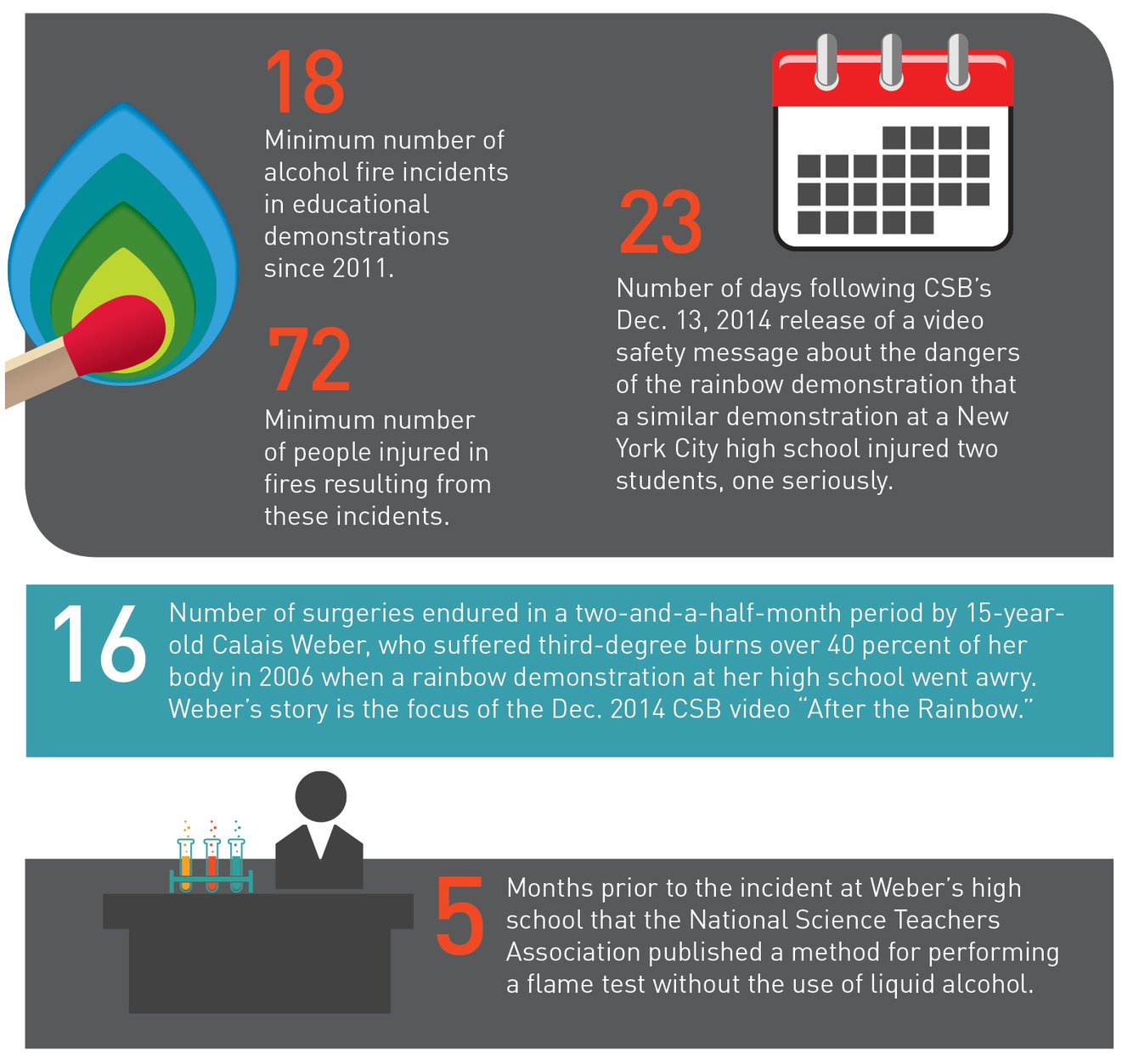DEPARTMENTS
BY THE NUMBERS
Alcohol Fire Incidents
On Oct. 30, 2015, two students at W.T. Woodson High School in Fairfax County, Va., were seriously burned during a chemistry class demonstration known as “rainbow flame,” which is intended to show how various mineral salts produce different color flames when burned. The accident was one of many recent incidents resulting from classroom demonstrations in which a teacher pours a liquid alcohol such as methanol from a bulk container near an open flame. Information about these incidents from various sources appears below. Numerous organizations, including the U.S. Chemical Safety Board, the American Chemical Society, and the National Science Teachers Association, have repeatedly called for schools to discontinue the rainbow flame demonstration.
SOURCES
American Chemical Society: “K-12 educational school museum likely alcohol fire incidents.”
CSB: “Statement of CSB Chairperson Rafael Moure-Eraso Warning Against Use of Methanol During Laboratory and Classroom Combustion Demonstrations” (Sep. 2014).
SciLogs: “From Good-Looking to Beautiful: Calais Weber’s Story of Tragedy and Triumph” (Oct. 2011).
RELATED
C&EN: “Improving Chemistry Demonstration Safety” (Nov. 2014).
CSB: “After the Rainbow” (Dec. 2014).

From statement of former CSB chair Rafael Moure-Eraso, Sep. 15, 2014:
“There are safer alternative ways to demonstrate the same scientific phenomena, and many teachers are already using them. Any use of methanol or other flammables should be either avoided completely or restricted to minimal amounts, which have been safely dispensed at remote locations. Bulk containers of flammable liquids must never be positioned or handled near viewing audiences, especially when there are potential ignition sources present.”
thesynergist | TOC | NEWSWATCH | DEPARTMENTS | COMMUNITY
Editor's Note: Fumes vs. Vapors
The original wording from the Center for Public Integrity's report "Common Solvent Keeps Killing Workers, Consumers" mistakenly refers to "fumes" in a context where "vapors" is the correct term. The Synergist has corrected this error in the digital edition.
Unfortunately, the error found its way into the print version of the November issue. The Synergist regrets the error and will publish a correction in the December issue.
Ed Rutkowski, editor

